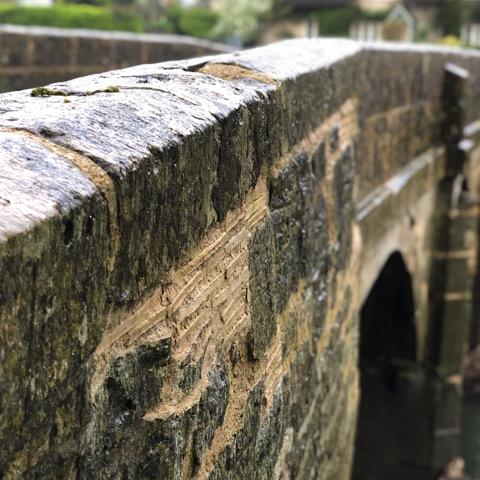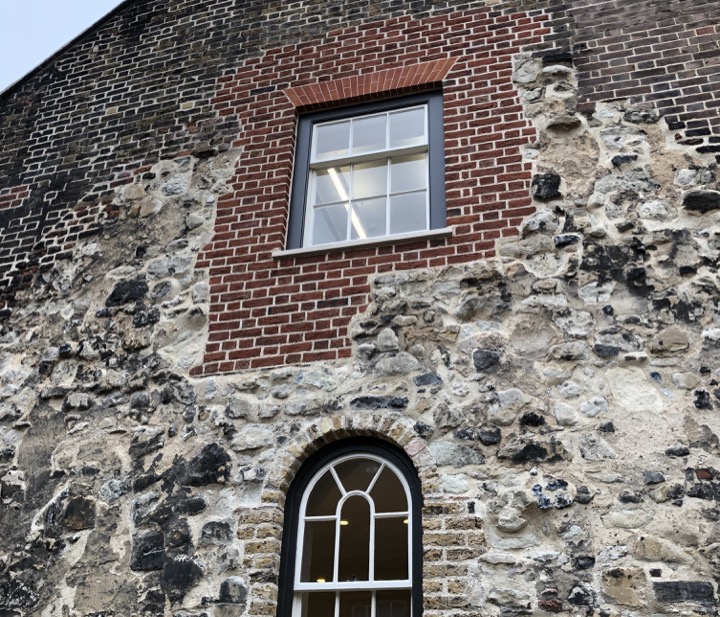Masonry - Conservation Approaches
4th May, 2019Various Conservation Approaches related to Masonry Construction
In my previous blog entry I discussed some of the different conservation approaches we have been seeing during the Scholarship, giving two examples related to historical paints. More often, we are invited to see projects related primarily to the conservation of masonry buildings. Again, the approaches we are discussing with our generous hosts are multiple and varied. I have chosen to write here about two approaches in particular which exemplify these differences. In each case, decisions were made based on the specific building, place and people.
On 5 April 2019 we visited a castle in Lincolnshire with Mark Hoare (SPAB Scholar 2004). The castle is a schedule ancient monument, with numerous listed structures also forming part of the complex. The client in this instance appeared to have strong opinions which influenced the decisions made. In some cases, it seemed that the client had a more restoration-minded approach; Mark Hoare discussed how he mediated between the clients wishes and the SPAB conservation and repair ethos, and those of the conservation officer. In particular, it was interesting to see where Mark chose to carefully conserve fabric or embrace decay, and conversely where reinstatement or ‘tidying’ work was taking place. Additions to the castle were done using new like-for-like materials. Modern tooling (or subtle coursing differences) denote the difference to the trained eye.
 New materials above the scheduled ancient monument.
New materials above the scheduled ancient monument.
 New material within the old castle's exposed rubble core.
New material within the old castle's exposed rubble core.
In contrast, Andrew Townsend Architects (AWA) employ a very honest repair method, ensuring that new work is obvious also to the untrained eye. We spent time with Andrew and his colleagues on 9-10 April, following our trip to Lincolnshire, and saw various AWA projects in Oxfordshire and Somerset. At the Lodging Range, which we visited with AWA architect Oliver Wilson (SPAB Scholar 2015), we saw many examples of what is considered to be the archetypal SPAB masonry conservation approach - tile repairs.


Two examples of stone tile repairs by AWA.
Each of the above describe ‘honest’ repairs. However, I think the principle differences are in the degree of explicitness and legibility of the repair to a non-specialised viewer. Mark Hoare’s approach at the castle was to repair using materials to match the existing, whereas AWA prefer new materials which differ to the original construction (i.e. clay tiles). Mark Hoare showed both examples where deteriorated fabric was left in situ (as with AWA), but also where the old was replaced or reinstated.
As with the historic paint example projects, these varied conservation philosophies have led to different physical manifestations on site. However, what is evident with these projects (and many more we have seen besides) is that there is a wealth of research being done to inform most of the decisions being made. (Of course, we have seen some key exceptions to this… though that must be the subject of a further blog post!!) With such extensive research leading to well founded decisions, I find it hard to determine if one approach is more appropriate than the other. I felt both approaches were appropriate to varying degrees, as they were based on solid reasoning and can be well rationalised. Personally (and superficially) I might be more inclined to one approach than the other. Of course, my final approach to any future project will be determined on a case-by-case basis!
 Another interesting example of a masonry conservation approach, by Ptolemy Dean at Westminster School.
Another interesting example of a masonry conservation approach, by Ptolemy Dean at Westminster School.